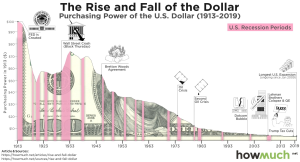Housing productivity is a pressing concern in the U.S., significantly impacting the ongoing housing affordability crisis. As land-use regulations tighten and NIMBYism flourishes, builders face insurmountable challenges that diminish their ability to innovate and scale projects effectively. The construction sector’s productivity has stagnated, leading to skyrocketing home prices that many Americans now find unattainable. The lack of large-scale developments has only compounded the homeownership challenges for first-time buyers and families alike. This interconnected web of regulations and market dynamics highlights the urgent need for reforms aimed at boosting housing productivity to make affordable living a reality for future generations.
When discussing the efficiency and effectiveness in the housing sector, terms like building productivity and construction efficiency are pivotal. The current landscape reveals significant hurdles tied to housing availability and regulatory constraints, which have stifled innovation and reduced the scale of residential projects. As communities grapple with local zoning laws and regulations, many potential developments are thwarted, contributing to escalating housing costs. This situation draws attention to the need for a reevaluation of these restrictive practices, as the drive for affordable housing solutions becomes increasingly critical. Understanding the dynamics of production within the housing market is essential to addressing the profound challenges surrounding accessibility and affordability.
The Impact of NIMBYism on Housing Productivity
NIMBYism, short for “Not In My Backyard,” has become a significant barrier to housing development in many American communities. This local attitude toward new construction often leads to stringent land-use regulations that restrict the scope and size of housing projects. As documented in recent research, these regulations stunt builders’ abilities to innovate and scale up operations, stifling productivity within the housing sector. When the laws dictate the minutiae of home design and project specifications, builders find that they are increasingly confined to smaller developments, which undermines the efficiencies of mass production that have driven down costs in other manufacturing industries.
The evidence is clear: as local land-use regulations have intensified since the 1970s, the productivity of construction has declined sharply. The paper highlights how the construction sector, which once thrived on large-scale projects similar to the famous Levittown, now grapples with the realities of smaller construction firms that lack resources and incentive to innovate. In an era where the homeownership challenges dominate the landscape, shifting perceptions of NIMBYism are crucial to finding solutions to improve housing productivity and affordability.
Land-Use Regulations and the Housing Affordability Crisis
Over the past few decades, the interplay between land-use regulations and the rising housing affordability crisis has become increasingly evident. Stricter zoning laws and regulations intended to preserve neighborhood character and limit construction density have inadvertently escalated housing costs. Studies illustrate that as municipalities impose various requirements—from minimum lot sizes to aesthetics—these measures not only hinder the increase of housing supply but also inflate overall prices, making homeownership a distant dream for many Americans.
In essence, the nexus between regulatory burdens and housing costs challenges the very foundation of the construction sector. As fewer larger projects are approved and developed, the average cost of building homes continues to soar. Ironically, while these regulations aim to protect local interests, they contribute to the very housing affordability crisis that strains families across the nation.
Reinvigorating Construction Sector Productivity
To address the ongoing decline in construction sector productivity, a reevaluation of existing land-use policies is crucial. The current fragmented approach to housing development, driven by excessive regulations, leads to reduced economies of scale and innovation failures. For the housing market to recover and regain productivity akin to its post-war boom periods, it is essential to foster an environment conducive to larger, more efficient building projects. This could mean revisiting zoning laws that dictate the size and scope of builds to enable developers to take advantage of mass production techniques that significantly lower costs.
Innovation must also be reignited within the sector. Historical analysis shows that patenting and R&D in construction lagged behind other industries post-1970, which must be reversed to stimulate interest and investment in new technologies and methods. By advocating for practices that underscore productivity, the industry could emerge from the shadows of its current stagnation and align more closely with the advancements seen in manufacturing sectors.
Homeownership Challenges in Today’s Economy
The struggle for homeownership has reached critical levels in the United States, with many young adults and low-income individuals unable to afford homes despite a strong economy. Rising costs, largely driven by inefficiencies in the housing market and labor shortages, place homeownership further out of reach for many. With the median home price continuing to climb, especially in urban areas plagued by NIMBYism and stringent zoning regulations, these challenges require immediate attention from both policymakers and industry leaders.
Moreover, the stark generational wealth gap in home equity highlights the urgency of addressing these challenges. Many older homeowners see substantial increases in their property values, while younger generations struggle with stagnant wages and soaring housing costs. For policies to be effective, they must also consider the socio-economic factors influencing homeownership and seek to create pathways for future generations to build wealth through property.
Economic Growth vs. Housing Development: A Paradox
The apparent paradox of rising economic growth juxtaposed with stagnation in housing development presents a complex issue for policymakers and economists alike. Despite other sectors experiencing growth and productivity gains, the construction industry has failed to keep pace due to factors such as NIMBYism and restrictive land-use policies. Instead of benefiting from the overall economic advancements, the housing sector appears to be mired in regulations that inhibit growth and innovation.
To bridge this paradox, collaborative efforts are essential among different stakeholders, including builders, local governments, and residents. Policies aimed at revising and simplifying land-use regulations can help to initiate broader development dynamics, enabling a more responsive housing market that meets affordability goals while stimulating economic growth. Achieving this balance is critical for fostering widespread homeownership and preventing further declines in construction productivity.
Historical Context: Lessons from Past Housing Booms
Examining historical housing booms provides valuable insights into current challenges facing the construction sector. During the post-World War II era, the emphasis on mass production enabled builders to create expansive communities that met the housing demands of a growing population. However, the shift toward more fragmented and localized building practices, driven by NIMBY sentiments and land-use regulations, has stunted sector growth. A return to thinking on a larger scale might be necessary to address today’s housing crisis effectively.
Understanding the dynamics that allowed for the effective scaling of housing developments in the past can inform present-day strategies. By focusing on best practices from historic projects that successfully combined efficiency with affordability, policymakers can craft solutions that allow for larger projects and more integrated community developments, ultimately driving down the cost of new homes.
Innovation’s Role in Revitalizing Construction
Innovation is the lifeblood of any industry, and the construction sector is no exception. With patenting in the construction field declining since the 1970s, there is significant room for growth and advancement if the industry is to overcome its productivity challenges. Renewed investment in innovative building techniques and materials can lead to lower costs, reduced labor requirements, and increased scalability in home construction, helping alleviate the affordability crisis.
Moreover, fostering a culture of innovation will not only benefit builders but will also activate job creation and economic expansion across related industries. Encouraging collaboration between the construction sector and technological innovators can unlock new methodologies that drive efficiency and sustainability in housing production, presenting an opportunity to reconcile the gaps caused by previous regulatory frameworks.
Financial Implications of Housing Disparities
The financial implications of the housing affordability crisis ripple across the economy, leading to significant socio-economic disparities. As homeownership becomes increasingly unattainable for younger generations, the intergenerational transfer of wealth shifts dramatically. The research highlights alarming trends showing a stark contrast in home equity between older and younger Americans, which undermines long-term economic stability for many families.
Addressing these disparities necessitates a multifaceted approach that includes policy reform, educational resources for potential homebuyers, and programs aimed at increasing access to affordable housing. By providing supportive financial tools and removing barriers to homeownership, the goal should be to promote equity within the housing market and establish a foundation for economic growth that is inclusive.
Navigating the Future of Housing Developments
Looking ahead, the future of housing developments hinges on the ability to navigate the complex interplay of local regulations, market demand, and productivity challenges. Emphasizing flexible land-use policies and encouraging large-scale projects will be critical in addressing current housing shortages. As younger generations express demands for more affordable living options, innovative approaches to development will be essential.
Incorporating community input while streamlining the approval process for new projects will contribute to more sustainable growth patterns in housing developments. By fostering an atmosphere where builders have the opportunity to capitalize on efficiencies and innovations, the goal is to create a renewed landscape for housing that meets today’s demands while setting the stage for future residents.
Frequently Asked Questions
How do land-use regulations affect housing productivity?
Land-use regulations can significantly hinder housing productivity by limiting the size and scale of construction projects. These regulations encourage smaller, bespoke builds rather than mass-produced homes, leading to inefficiencies in the construction sector. Consequently, the productivity of homebuilding declines, contributing to the ongoing housing affordability crisis.
What role does NIMBYism play in the housing affordability crisis?
NIMBYism, or ‘Not In My BackYard’ attitudes, plays a critical role in the housing affordability crisis by promoting land-use policies that restrict new housing developments. These policies can stifle construction innovation and productivity, resulting in fewer homes being built and exacerbating the affordability issues faced by many Americans.
How has construction sector productivity changed over the decades?
Construction sector productivity has notably declined since the 1970s, despite the overall growth in the U.S. economy. Factors like increasing land-use regulations and NIMBYism have contributed to this decline, with fewer large-scale projects being initiated, which historically supported higher productivity rates.
What are the implications of declining construction productivity for homeownership challenges?
The decline in construction productivity directly impacts homeownership challenges by driving up the costs of new homes, making them less accessible for many buyers. As productivity falls, the price of housing rises, further distancing potential homeowners from achieving affordable housing options.
Can larger construction firms help improve housing productivity?
Yes, larger construction firms tend to be more productive due to economies of scale. They can build more housing units per employee than smaller firms, making them pivotal in addressing housing shortages. Encouraging larger developments could help mitigate some of the challenges posed by current land-use regulations and NIMBYism.
What is the potential impact of innovation on housing productivity?
Innovation is crucial for improving housing productivity. Historically, the construction sector showed significant productivity gains through innovations. However, since the 1970s, patenting and R&D activity in construction have lagged, which has inhibited advancements that could streamline processes and reduce costs in housing development.
How do housing productivity trends affect different demographic groups?
Housing productivity trends can disproportionately affect younger demographic groups, particularly those looking to enter the housing market. As productivity declines and prices rise, younger individuals often face greater barriers to homeownership, leading to a widening wealth gap between age groups, notably between younger and older homeowners.
What can be done to enhance housing productivity amidst current challenges?
Enhancing housing productivity could involve revising land-use regulations to allow for larger projects and minimize the impact of NIMBYism. Encouraging innovative building practices and supporting large-scale development initiatives can also play critical roles in alleviating the housing affordability crisis.
| Key Points | Details | |
|---|---|---|
| Housing Crisis | There is a critical housing affordability crisis in the U.S., with homeownership becoming increasingly out of reach. | |
| Productivity Decline | Construction productivity has significantly declined since 1970, in contrast to rising productivity in other sectors, like manufacturing. | |
| NIMBY Policies | Restrictive ‘Not In My Backyard’ (NIMBY) land-use policies have been identified as key factors hindering construction productivity and housing availability. | |
| Large Projects vs. Small Projects | The share of large-scale housing developments has fallen, leading to smaller and less efficient construction firms. | |
| Economic Inequity | There has been a substantial transfer of housing wealth from younger to older generations, exacerbating economic inequality. | |
| Innovation Lag | Since the 1970s, the construction sector has seen a decline in innovation and patenting compared to other industries. | |
Summary
Housing productivity is currently stifled by restrictive land-use regulations that hinder large-scale construction and innovation in the sector. As productivity declines in the housing industry, affordability continues to be a significant issue for many Americans today. This situation calls for a reassessment of zoning laws and policies to foster greater efficiency and accessibility within the housing market, which is crucial for addressing the ongoing housing crisis.




